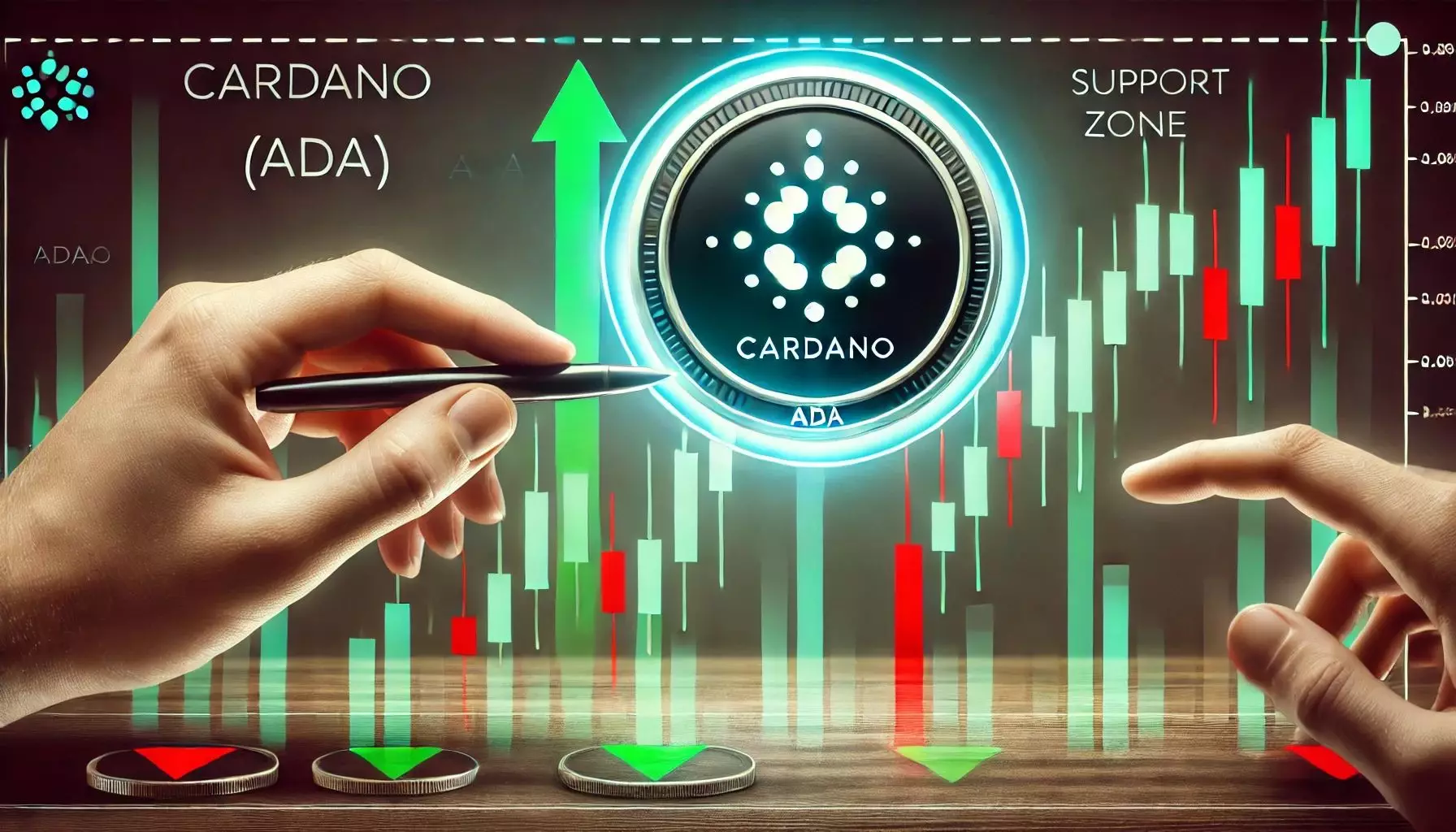Investing in cryptocurrency is a high-stakes game where fortunes are made and lost in fractions of seconds. The current landscape shows tremendous volatility, and Cardano (ADA) exemplifies this phenomenon remarkably well. Recently, the price of ADA plummeted by more than 28%, and this unsettling trend has sent waves of panic reverberating through the crypto community. Many investors have been blinded by fear, hastily trading their assets without a calculated strategy. These impulsive moves often yield disastrous results, as market sentiments can turn on a dime. The reality is, volatility isn’t just a sad fact of life for crypto traders; it’s a breeding ground for costly mistakes.
Understanding Technical Analysis: A Double-Edged Sword
When faced with uncertainty, many traders turn to technical analysis for guidance, thinking it will illuminate their trading decisions. Analyst Ali Martinez has identified a crucial support zone for Cardano between $0.80 and $0.66, crucial for determining ADA’s future trajectory. However, blindly adhering to these insights without a masterful understanding of market dynamics is a perilous endeavor. Over-reliance on technical indicators can lead investors to miss critical contextual information, such as macroeconomic trends, market news, and investor sentiment. Trading should not solely hinge on graphs and numbers; one must marry technical analysis with a nuanced understanding of the underlying ecosystem.
Setting Key Levels—The Self-Defeating Prophecy
The narrative around Cardano stabilizing above $0.80 or $0.66 creates a pathway for renewed bullish momentum. Conversely, if it fails to hold those ranges, many alarmed investors will react by selling, precipitating further price declines. This creates a self-defeating cycle: the more emphasis traders place on these psychologically significant levels, the more they shape the actual trading behavior. It catalyzes a panic response that may not even relate to the fundamental value of the cryptocurrency. This mentality is not just detrimental to individuals; it destabilizes market confidence and discourages potential new investments.
Fear vs. Rational Decision-Making
Market sentiment is as fragile as glass; a simple rumor or piece of news can shatter it. Although ADA has shown some resilience compared to other altcoins, many investors remain paralyzed by fear. Continuing to fearlessly watch the fluctuations without strategy leads to a cascade of poor decisions. The bullish sentiment that could push ADA back above multi-year highs remains tantalizingly out of reach. But a lack of rational decision-making allows emotions to dictate actions, often swallowing the most experienced traders whole. It is essential to lay a well-thought-out plan, taking emotions out of the equation.
The 200-Day EMA: An Overrated Safety Net?
Currently priced around $0.74, ADA hovers just above the 200-day Exponential Moving Average (EMA), a critical support zone many traders scramble to defend. The myth of the 200-day EMA as an ultimate safety net can lead to a false sense of security. Yes, maintaining this level could herald a move forward; however, a singular focus on this metric neglects the realities of market fluctuations. If ADA falls below this EMA, it could lead to significant downward pressure, perhaps around $0.60. Therefore, investors would do well to recognize that relying solely on this indicator could expose them to substantial risks.
Understanding Risk Management—A Lost Art?
Investors must embrace the critical tenets of risk management. Taking calculated risks is the fine line that separates successful traders from those watching their dreams vanish. Cardano’s moment of truth lies not only in breaking critical price levels but in the broader appreciation of smart trading practices. Use stop-loss orders wisely, and avoid overexposing yourself to a single asset. Cardano might indeed recover, but high-risk strategies will inevitably lead to poor investment outcomes, exacerbated by poor market conditions.
Navigating the tumultuous waters of cryptocurrency investing calls for more than just an understanding of market movements. It requires temperance, a well-rounded strategy, and a commitment to responsible investing practices. The mistakes made in moments of panic carve out financial wounds that take years to heal, reminding us that sometimes, the most significant risk is neglecting to properly comprehend risk management itself.

